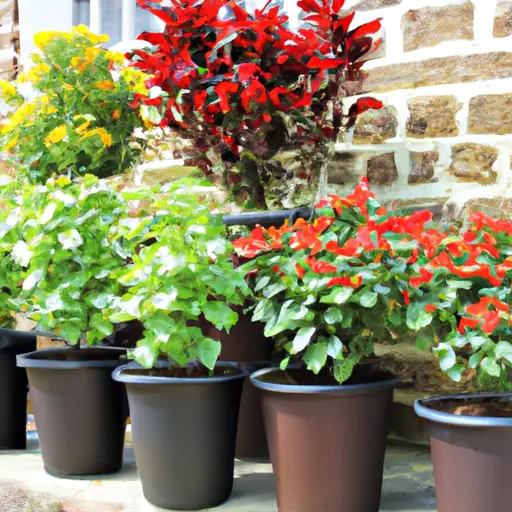The Art of Choosing the Right Containers for Your Garden
When it comes to gardening, choosing the right containers is just as important as selecting the perfect plants. The containers you use will not only impact the aesthetic appeal of your garden but will also influence the growth and health of your plants. With a plethora of options available in the market, it can be overwhelming to know where to start. In this article, we will explore the art of choosing the right containers for your garden.
1. Size Matters:
Before purchasing containers, consider the size of your plants and their root systems. A too small container can restrict root growth, leading to stunted plants, while an overly large container can cause waterlogging and hinder proper drainage. The general rule of thumb is to choose a container that provides enough space for the plant’s roots to grow comfortably without being constricted.
2. Material Selection:
Containers come in various materials such as terracotta, plastic, wood, and metal. Each material has its own pros and cons, so it’s crucial to understand their characteristics before making a decision.
– Terracotta: These clay pots are aesthetically pleasing and offer excellent breathability for plant roots. However, they can be prone to cracking during freezing temperatures.
– Plastic: Inexpensive and lightweight, plastic containers are easy to move around. They retain moisture well but may not provide adequate insulation during extreme temperatures.
– Wood: Wooden containers are natural-looking and have good insulation properties. However, they require regular maintenance like sealing or painting to increase longevity.
– Metal: Metal containers are durable and provide excellent drainage. However, they can heat up quickly under direct sunlight, potentially harming sensitive plants.
3. Drainage:
Proper drainage is crucial for plant health as it prevents waterlogging that can lead to root rot or other diseases. Look for containers with drainage holes at the bottom or opt for self-watering pots with built-in reservoirs that allow excess water to be stored away from the roots. If you fall in love with a container without drainage holes, consider drilling some yourself or use it as an outer decorative pot for a plant placed in a properly draining inner container.
4. Matching Style and Function:
Consider the overall style of your garden and select containers that complement it. For a modern and sleek look, opt for clean lines and minimalistic designs. Traditional gardens often pair well with terracotta or ornate ceramic pots. Additionally, think about the function of the container; if you plan on moving it frequently, lightweight materials like plastic would be more suitable.
5. Consider Microclimates:
Different areas in your garden may have varying light conditions, temperatures, and wind exposure. Understanding these microclimates can help you strategically place containers to optimize plant growth. For example, heat-loving plants would thrive in containers set against sunny walls or patios, while shade-loving plants should be placed in cooler areas.
6. Think Outside the Box:
Don’t limit yourself to traditional containers; explore unconventional options such as repurposed items like old buckets, barrels, or even shoes! Be sure to drill holes for drainage and ensure they are appropriate for the size and needs of your plants.
7. Maintenance Considerations:
Consider the amount of time you can dedicate to maintaining your containers before making a purchase decision. Porous materials like terracotta may require more frequent watering as they tend to dry out faster compared to plastic or metal containers.
In conclusion, choosing the right containers for your garden is indeed an art form that requires careful consideration of size, material, drainage, style compatibility, microclimates, creativity, and maintenance requirements. By taking these factors into account and selecting containers that meet both functional and aesthetic needs, you can create a beautiful garden that thrives with healthy plants all year round.













